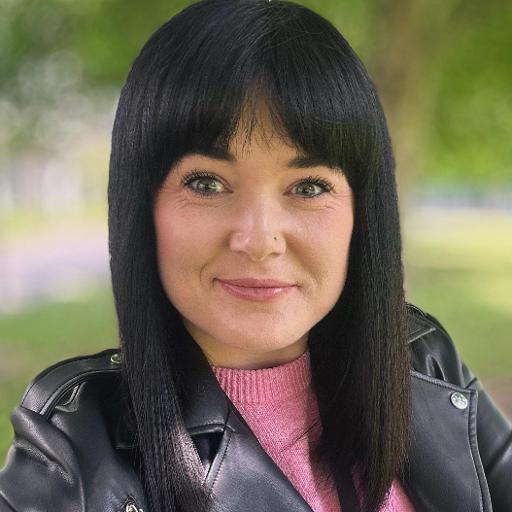News
Our Top Story
Global Illuminations Procession returns in a grand spectacle of light
The University of Warwick’s Global Illuminations Procession returned to campus, bringing together a record-breaking number of students to celebrate cultural diversity, and foster community connections.
Our Latest News
Warwick Arts Centre expands its popular volunteer programme
Warwick Arts Centre marks International Volunteer Day by celebrating its growing volunteer team and their role in supporting its year-round programme.
Digital-only immigration system is causing stress, fear and exclusion
A University of Warwick study highlights the human cost of the Home Office’s eVisa digitalisation system.
New European research prize recognises breakthrough on the origins of Earth’s building blocks
The ENGRAVE international collaboration has earned the first ever ‘Into Change Award’ from the Danish government, recognising the pivotal role University of Warwick scientists have played in ENGRAVE since its inception.
Nationwide seed relay drops off precious heritage seed at the University of Warwick’s UK Vegetable Genebank
Crop scientists at the UK Vegetable Genebank have taken delivery of a golden parcel of heritage seeds.
University of Warwick academic awarded Kitasato Microbial Chemistry Medal
Professor Greg Challis received the award for advanced research on bioactive compounds.
Winner of the Warwick Prize for Women in Translation announced
And the Walls Became the World All Around has won the 2025 Warwick Prize for Women in Translation.
“Arts and humanities scholarship is not an ornament”: Midlands universities call for coordinated action to reframe value and secure the future
A group of senior academic leaders, including the University of Warwick’s Vice-Provost of the Faculty of Arts, Rachel Moseley, have called for renewed advocacy for the economic, cultural and civic value of arts and humanities.
Warwick strengthens ties with Hong Kong Polytechnic University
On 20 November, University of Warwick welcomed a distinguished delegation from The Hong Kong Polytechnic University, led by President Jin-Guang Teng.
Warwick marks 60 years with its largest-ever Alumni Reunion
Warwick welcomed more than 1,000 alumni and guests back to campus for a landmark celebration marking the University’s 60th anniversary.
New research consortium will use AI to support national security analysts
University of Warwick is part of a new £1m consortium with the Alan Turing Institute to develop AI methods for national security and defence.
University of Warwick and Belgrade Theatre join forces to explore community co-creation
Warwick and the Belgrade have appointed a new PhD researcher to explore how theatres can work hand-in-hand with their local communities to create art that reflects, challenges, and inspires civic life.
Warwick empowers local pupils to become Mental Health Champions
Pupils from five Coventry schools took part in a new University of Warwick programme to help young people become Mental Health Champions.
Our Latest Expert Comment
Find an Expert
Our experts are available for interview on all the latest news stories.
In The Conversation...
What are our academics talking about?
Read the latest articles by Warwick academics published in The Conversation.
Our Press Team
We are available during both standard 9-5 hours and out-of-hours.
Beauchamp, Kat

Kat Beauchamp
She/her
Communications Manager (Media Relations)
Manages the Press Team and any external media relating to International and Strategic Projects. Get in touch about how our team can help you, media training, and broadcast media.
Baylis, Ann

Ann Baylis
She/her
Media & Communications Officer
Shining a media spotlight on Arts & Humanities, amplifying our achievements to a global audience.
All things rural! Married to a farmer. Keeps horses & dogs. Super-keen gardener. Likes making stuff.
Higgs, Matt

Matt Higgs
He/him
Media & Communications Officer (Science)
Working with our scientists and STEM faculty, I amplify Warwick’s science stories in the media, showcasing the university as a place of innovation and discovery.
Things I love: Hiking, Dogs, Books (fiction and non-fiction), Films, Exercising
Connell, Steve

Stevie Connoll
She/her
Media & Communications Officer
At Warwick, I help share the stories that bring our University to life, focusing on regional connections, building our brand, and showcasing why campus is such a great place to be.
Outside of work, I’m a busy mum who loves the gym, Grey’s Anatomy re-runs, and a big jar of Nutella!
Barker, Dom

Dom Barker
He/him
Media & Communications Officer
Dom handles press relations for politics, law, and economics, as well as corporate matters.
I'm interested in US politics (think The West Wing), and play table tennis as often as possible!


Dr Nikhil Datta on the Budget announcement of a new High Value Council Tax Surcharge ('Mansion Tax')
Dr Freya Harrison on Government plans to phase out animal experiments
Dr Shonali Banerjee on US election results
Dr Adriano Lameira & Dr. Ani Permana pay tribute to Dame Jane Goodall
Professor Thiemo Fetzer responds to the Government’s “Pride in Place” agenda
Dr Sangwoo Lee on the Latest ONS Labour Market Statistics